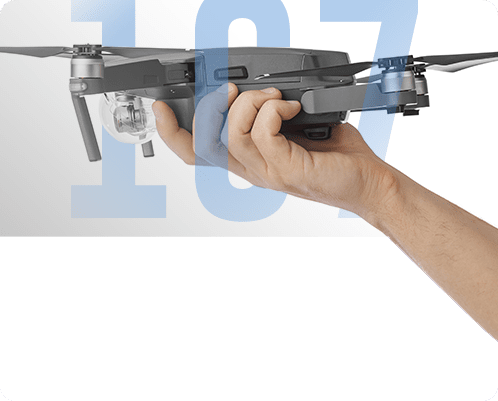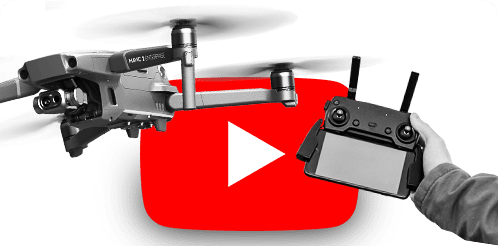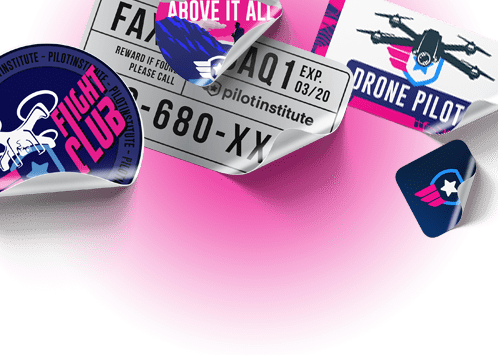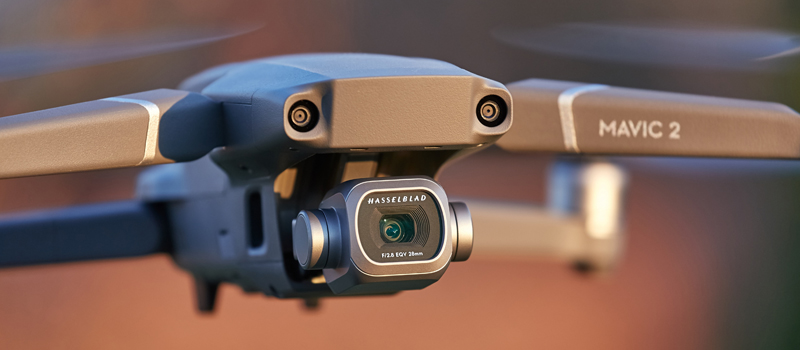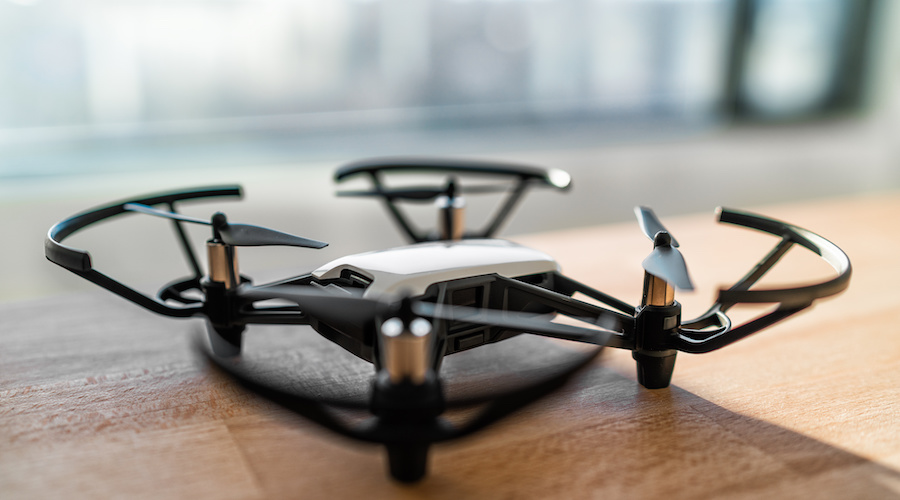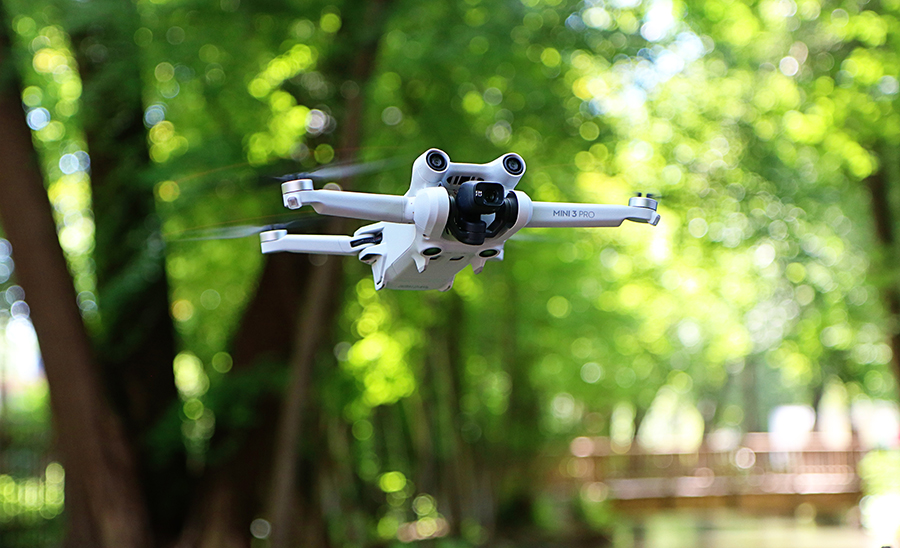-
What do the new regulations say?
-
Defining a few crucial terms
-
What does the FAA consider as “flying over people?”
-
Defining the drone categories
-
Does a sub-250 gram drone cause lacerations?
-
Are the DJI Mavic Mini or Mini 2 considered Category 1 drones?
- Drone News Update
-
Making the Mavic Mini and Mini 2 Category 1-compliant
-
Examples of operations over people and moving vehicles
-
What does the FAA mean by “kinetic energy limit?”
-
Final thoughts
As of April 21, 2021, the FAA’s proposed changes on the Part 107 rules for drone flight over people and moving vehicles have been implemented. This should give more operational flexibility to commercial drone pilots.
However, this does not mean that the safety of bystanders should become compromised. A potential problem with this new rule is that it is already fraught with misconceptions even at this early stage. Before you go flying your drone over a crowd of people, check out this guide first where we clear up the common points of confusion.
What do the new regulations say?
Let’s start with the basics first. The first thing you need to know is that you can’t just fly any drone over people. These rules only apply to Part 107 operators. If you’re flying recreationally, you still can’t fly over people and vehicles.
Drones will now be categorized between Category 1, 2, 3, or 4. For each category, specific restrictions on flight over people will apply. Drones not compliant with Category 1, 2, 3, or 4 are not allowed to perform any type of flight (not even transitioning) over people or moving vehicles.
A Means of Compliance (MOC) is a document prepared by the drone manufacturer outlining why a specific drone model complies with the category of an identified category. This implies that the drone has undergone a testing procedure done by the manufacturer, with the results provided in the same documents. The MOC will be submitted to the FAA for their review and approval.
We will get to the specific definitions of each category later on. The first thing you need to know is that burden of identifying which drone models fall under which category falls on the shoulders of the manufacturer. Before a drone becomes officially classified under a category, it needs to be supported by two documents.
Once a MOC has been approved, the drone manufacturer will then submit a Declaration of Compliance (DOC). This document specifies the drones with corresponding serial numbers that were manufactured according to the standards prescribed in the approved MOC.
For their part, the FAA will maintain a database of which drone models have been approved for each category. Drone pilots can then use this database as a reference when buying a new drone or for checking which restrictions on flight over people apply to them.
Defining a few crucial terms
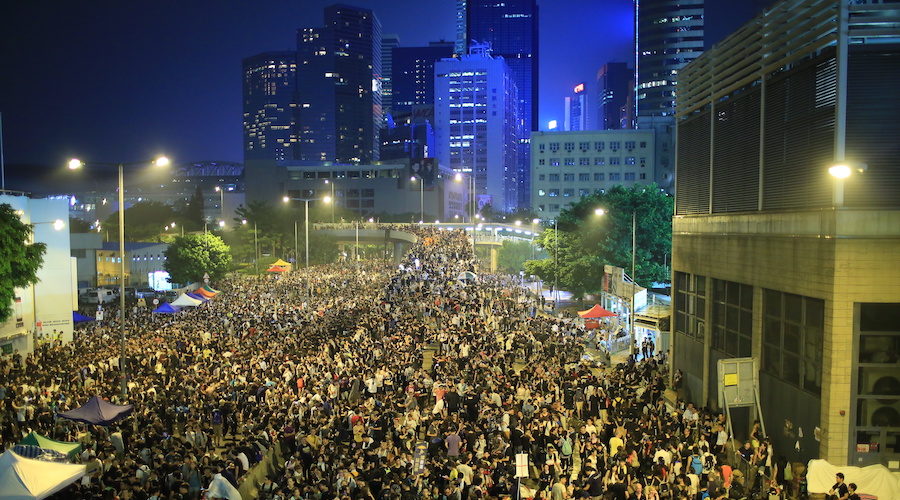
Before jumping into a deep discussion of the new regulations, let’s define a few terms that we will be referring to repeatedly.
Open-air assembly refers to any large group of people in an open-air environment. The specific requirement for a group of people to be considered an open-air assembly isn’t explicitly defined in the regulations. The FAA simply states that an open-air assembly is assessed on a case-to-case basis but factors like the density of people and the size of the operational area need to be considered.
Sustained flight refers to operations where the drone remains above some part of an assembly of people. This can take the form of hovering in one spot, flying back and forth over the assembly, or circling over the assembly.
Transitioning flight, in contrast, refers only to a brief flight over a portion of an assembly where flight over people is merely incidental to a point-to-point operation. In simple words, this means that you are only merely “passing through” when flying over a crowd but not lingering for any purpose. However, going back and forth over a crowd several times might no longer be considered transitioning and may toe the line of being sustained flight.
The regulations also define a vehicle as any means of transportation, motorized or otherwise. This means that a bicycle or skateboard is as much of a vehicle as a car or semi-truck.
There are a few aspects of the new regulations that are poorly defined, particularly the one specifying what qualifies as an open-air assembly. This is no longer new – even the original Part 107 rules still have terms that lack highly specific definitions. Drone pilots are expected to exercise good judgment when deciding when a crowd is considered an open-air assembly.
What does the FAA consider as “flying over people?”
At this point, it’s worth taking a step aside and looking at the FAA’s definition of flying over people. The simplest definition is that a drone flies over a person anytime that the drone is directly over any body part of that person. This is fairly straightforward and is the basic definition that comes to most people’s minds.
A special definition applies when the drone is in motion. If the drone suddenly deactivates while it is moving, its residual momentum will create a trajectory as it crashes to the ground. This creates the probability that a crashing drone can hurt a person, even if it is not directly flying over that person. The FAA expects drone pilots to consider this phenomenon when flying close to people, whether the area is sparsely or densely populated.
Defining the drone categories
The next crucial piece of information is the requirement for a drone to be considered under any of the four categories. To make this easier to comprehend, we have summarized the requirements in this handy table:
| Category 1 | Category 2 | Category 3 | |
| Weight limit | 0.55 lbs. or less | Less than 55 lbs. | |
| Eligibility requirements | No exposed rotating parts that can cause laceration | ||
| No kinetic energy limits | 11 ft-lbs. of kinetic energy limit | 25 ft-lbs. of kinetic energy limits | |
| FAA category approval | None | Must be requested by the manufacturer | |
| Label requirement | None | Labeled as Category 2 | Labeled as Category 3 |
We have omitted Category 4 drones from this matrix as this category isn’t likely to be relevant to a majority of drone pilots. Category 4 drones must have a Part 21 Airworthiness Certificate and must have documented systems for maintenance and inspection. These are the larger drones that are pretty much only used at large-scale enterprise levels.
Worth noting is that the weight limit indicated in the table refers to the takeoff weight of a drone. This includes the weight of any of the drone’s payload and accessories. As we will see later on, this is a crucial qualifier especially when it comes to Category 1 drones.
The regulation also specifies that a drone must have a mechanism that will protect bystanders from laceration injuries should the drone come in contact. This can include propeller guards or cages. We shall also discuss the concept of “kinetic energy limits” in more detail later on.
One interesting detail is that Category 1 drones do not need any FAA approval in the form of an MOC or DOC. This means that the drone pilot can do a self-assessment on their drone to determine whether it complies with Category 1 requirements.
As of writing, there is not yet a single drone model that has been approved by the FAA for Category 2 or 3. This means that, right now, flight over people and moving vehicles is only legal if you operate a Category 1 drone. The looser restrictions on Category 1 drones are also reflected in the corresponding labeling requirements.
| Category 1 | Category 2 | Category 3 | |
| Sustained Flights over Open Air Assembly | Yes, if UAS meets Remote ID requirements |
No. | |
| Sustain Flights over moving vehicles | If inside restricted area and people are on notice. | ||
| Sustained Flights anywhere else | Yes | If inside restricted area and people are on notice or outside restricted if under a structure or inside non-moving vehicle. |
|
| Transitioning | Yes including Open Air Assembly and Over Moving Vehicles |
Yes, but not over Open Air Assembly. Over moving vehicles if over restricted site with given notice. |
|
Does a sub-250 gram drone cause lacerations?
A major requirement for drones to fly over people is that their rotating parts should be covered to prevent them from causing laceration. Ideally, such a claim should be tested and proven by a manufacturer of a drone or a product that is meant to cover up a drone’s propellers. However, we’ve gone ahead and done a few tests on whether a drone that weighs less than 250 grams can cause laceration.
The test was done by flying an original Mavic Mini (with no propeller guards) against a surface simulating human skin. Trials were done using both the regular plastic propellers and carbon fiber propellers.
It took a few trial runs, but the test clearly demonstrated that a drone of this size and weight with no propellers guards can lacerate through human skin. This means that even a Category 1 drone will need to be augmented with propeller guards to comply with the requirements for flight over people. As we shall see later on, this has major implications on which drone models can be truthfully classified as Category 1.
Are the DJI Mavic Mini or Mini 2 considered Category 1 drones?
When the Mavic Mini was released, one of its major selling points was that it weighed less than 250 grams? At the time, the biggest benefit of this was that the Mavic Mini can be operated without needing to be registered with the FAA (this does not apply to Part 107 operations). The Mini 2 followed suit with the same value proposition.
With the new regulations on flight over people, the Mavic Mini and the Mini 2 were certainly on the top of the minds of many people as drone models that can be used under Category 1 rules. This would have meant that you would have been able to use them right now to fly over an open-air assembly using only a self-assessment procedure.
Sorry to burst your bubble but that does not seem to be the case. As our test has demonstrated, a Mavic Mini’s propellers can certainly cause skin lacerations. This means that the Mavic Mini (and consequently, the Mini 2) will need to have propeller guards at the very least to comply with operations over people requirements.
The thing about both the Mavic Mini and the Mini 2 is that they weigh only a hair below the 250-gram or 0.55-lb. limit for Category 1 drones. With propeller guards one, both these drones will go way above the weight limit.
Making the Mavic Mini and Mini 2 Category 1-compliant
If you’re willing to go through a few hoops, there is still a way for a Mavic Mini or Mini 2 with propeller guards to be considered as Category 1. DJI released Japan-exclusive versions of both the Mavic Mini and Mini 2 that are about 50 grams lighter than the original. This mainly because Japan’s Aeronautical Act requires that all drones that weigh 200 grams or above are considered UAVs and have to be approved before any planned operations.
The weight reduction was possible by simply using a smaller-capacity battery on the Mavic Mini and Mini 2. The lighter alternative batteries are also interchangeable with the models that we have here. By using this lighter battery, the Mavic Mini and Mini 2 will still weigh below 250 grams even with propeller guards installed.
The main hurdle for this strategy to work is the fact that this lighter version of the battery is not available in the US. It’s certainly possible to get one but you will likely need to buy the actual Japan-exclusive drone. DJI has not made any indication that the battery will be distributed more widely.
Examples of operations over people and moving vehicles

To attempt to clear up any confusion regarding definitions, let’s categorize the operations considered under these new regulations.
Sustained flight over open-air assembly involves flying a drone directly over crowds of people. Common examples of an open-air assembly include concerts, sports events, weddings, street fairs, and protests. Taking aerial photos and videos on busy universities and beaches can also be considered flight over an open-air assembly.
In these cases, sustained flight is almost inevitable for capturing good shots. Flying sustained operations over an open-air assembly is only allowed if you have a Category 1 or 2 drone and it has Remote ID. A Category 3 drone is not allowed to fly over an open-air assembly.
Sustained flight over moving vehicles can happen in the case of a car racing or motocross event or if you want to take photos of a local state park. Water vehicles such as boats, kayaks, and surfboards are also considered under this category.
All Category 1, 2, or 3 drones can do sustained operations over moving vehicles. The only relevant qualifier is that it is done inside a restricted area and that the people on board the vehicles are on notice. This is a lot easier for isolated events but is virtually impossible when done over a busy highway.
Sustained flight anywhere else involves cases that do not quite qualify as open-air assemblies or flight over moving vehicles. This might mean flying over just one or two people and other areas that are not densely populated.
Drone flight in this case can be done using Category 1 or 2 drones without special requirements. If you’re flying a Category 3 drone, then things are a little more complicated – operations are allowed if done inside a restricted area and the people involved are on notice. Outside of a restricted area, Category 3 drones will only be allowed to operate over a small group of people if the people are inside a covered structure or a stationary vehicle.
Transitioning involves only going from one point to another where flight over an open-air assembly and moving vehicles is only incidental. Category 1 and 2 drones are allowed to conduct transitioning without any further requirements.
For Category 3 drones, transitioning is allowed but not over an open-air assembly. If done over moving vehicles, it must still be done within a restricted site with the people involved given due notice.
What does the FAA mean by “kinetic energy limit?”
For just about any type of operations considered under these new provisions, Category 3 drones have restrictions that are a lot heavier. The implication here is that Category 3 drones can cause heavier damage should they crash. The most apparent indicator of this is the fact that Category 3 drones have a significantly higher kinetic energy limit. This begs the question – what exactly is a kinetic energy limit?
Kinetic energy, from its technical definition, is simply the amount of energy of a moving body. The major factors to be considered here are the weight and the body and its speed as it collides with another object. Obviously, a lighter and smaller drone will carry a smaller amount of kinetic energy.
Based on our calculations, a Mini 2 drone at the speed at which it can fly can carry up to 26 ft-lbs of kinetic energy. This is quite surprising, considering that there’s a limit of 25 ft-lbs of kinetic energy for a Category 3 drone. This implies that even a 250-gram drone will have to be customized to comply with the kinetic energy limits of the new rules.
The key here is to install parachutes on your drones. These parachutes are simple add-ons that deploy automatically when they detect that the drone is crashing. They are fairly effective and have already been used by drone pilots that have applied for Part 107.39 waivers in the past.
To illustrate, a Mavic Air 2 that can carry up to 80 ft-lbs. of kinetic energy can be slowed down to only about 5 ft-lbs. The much heavier Phantom 4 can be slowed down to about 8 to ft-lbs. from a baseline kinetic energy value of 1400 ft-lbs.
The FAA does not explicitly state that drones will have to be outfitted with parachutes to fly over people, but there seems to be no way to work around their kinetic energy limits. In the future, “ready-made” Category 2 or 3 drones with pre-attached parachutes may be commercially available. We’re not entirely sure that this is where the market is headed but it seems to be the only way unless the FAA revises their rules another time.
Final thoughts
The new Part 107 rules that allow for drone flight over people and moving vehicles seem like a move in the right direction. However, there are a lot of provisions in the rules that remain poorly understood. We have done a few tests and calculations to try to fill in some of these blanks.
Right now, there is not a single drone that can be considered under either Category 2 or 3. When they become available, we expect them to come with built-in parachutes to comply with the FAA’s kinetic energy limits. The FAA makes no mention of this at all, but this can have huge implications on the part of the drone manufacturers.
Theoretically, you can already fly a Category 1 drone over people now. However, we advise that you make sure that you’re actually flying a drone that complies with Category 1 requirements. If you cause an injury with a drone because you’re not using propeller guards or your drone is slightly above the weight limit, you would technically be found to be flying illegally.
A lot of the aspects of the new rules are still yet to be clarified. We expect to learn more as drone manufacturers work with the FAA to classify their drones under the proper categories. Until then, we recommend that drone pilots exercise some restraint over the prospect of flying over people and moving vehicles – this may not be as simple as we have initially thought.

